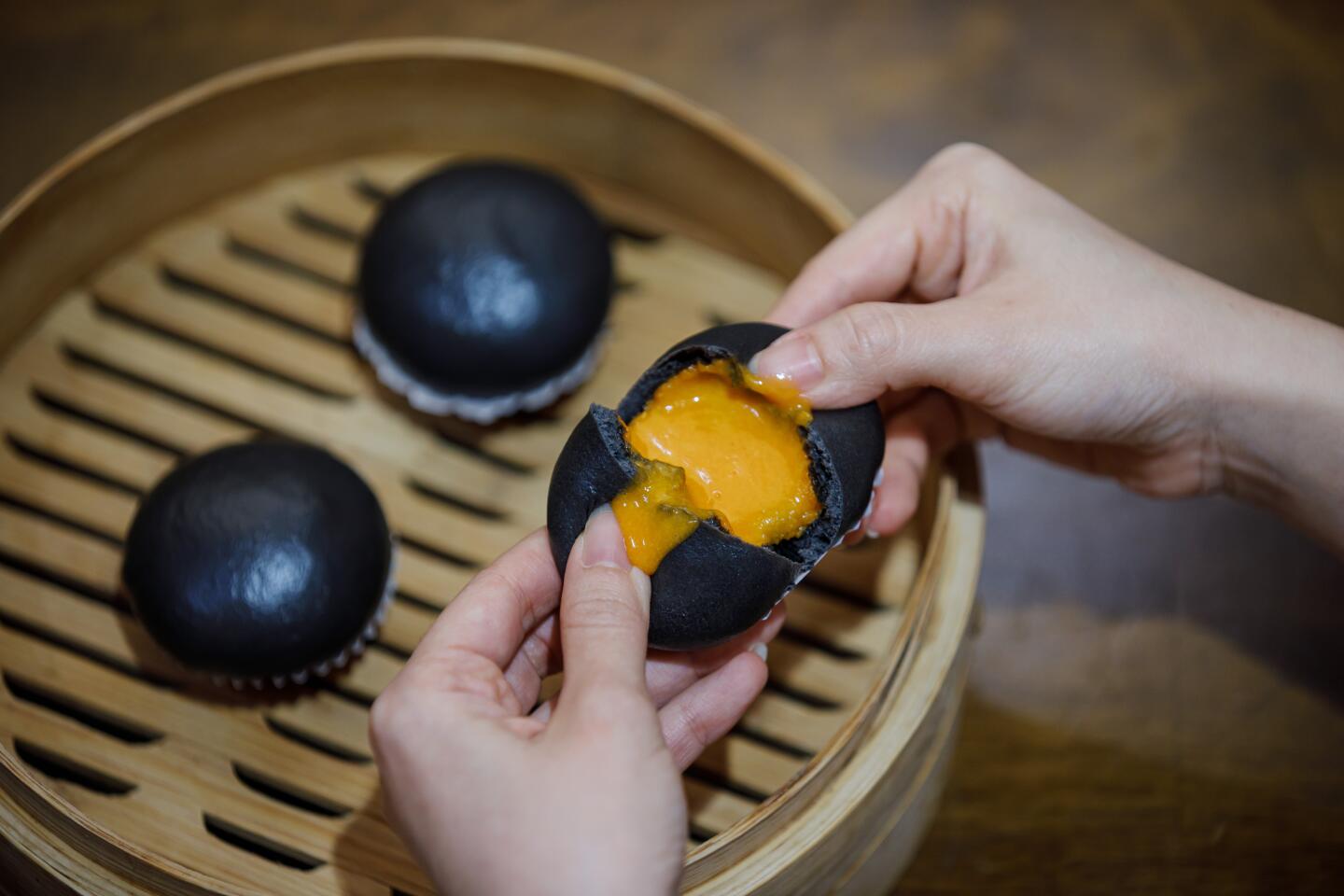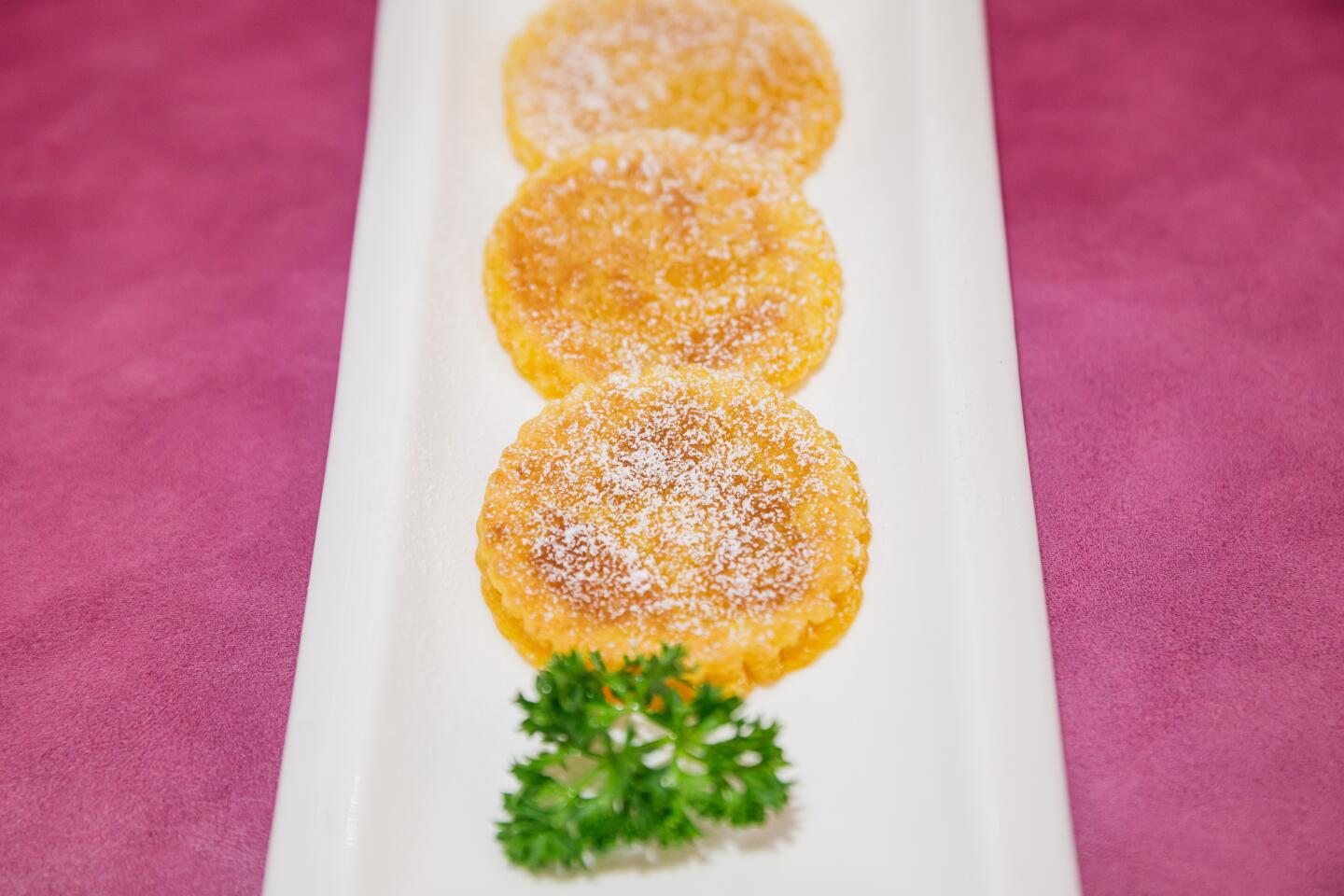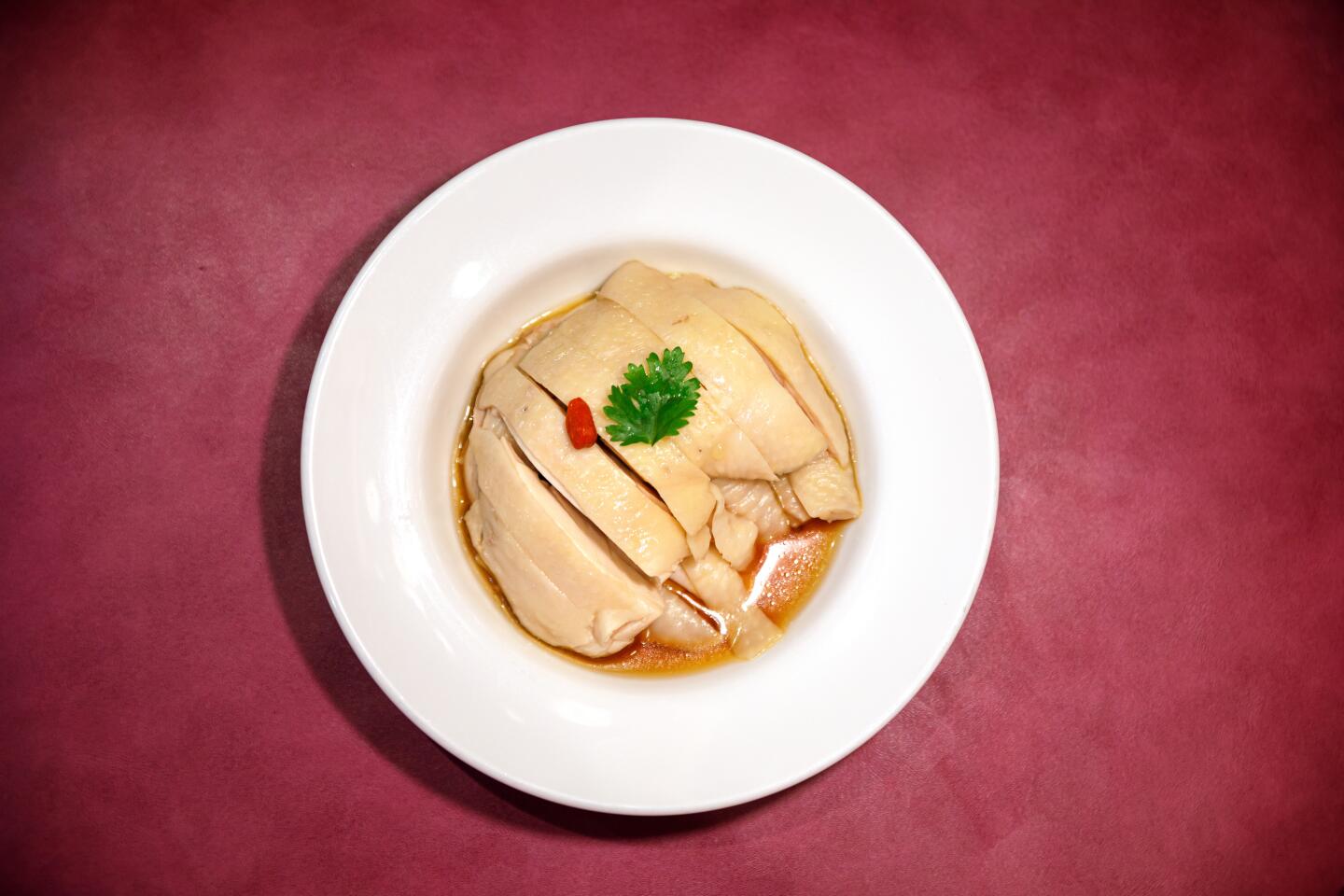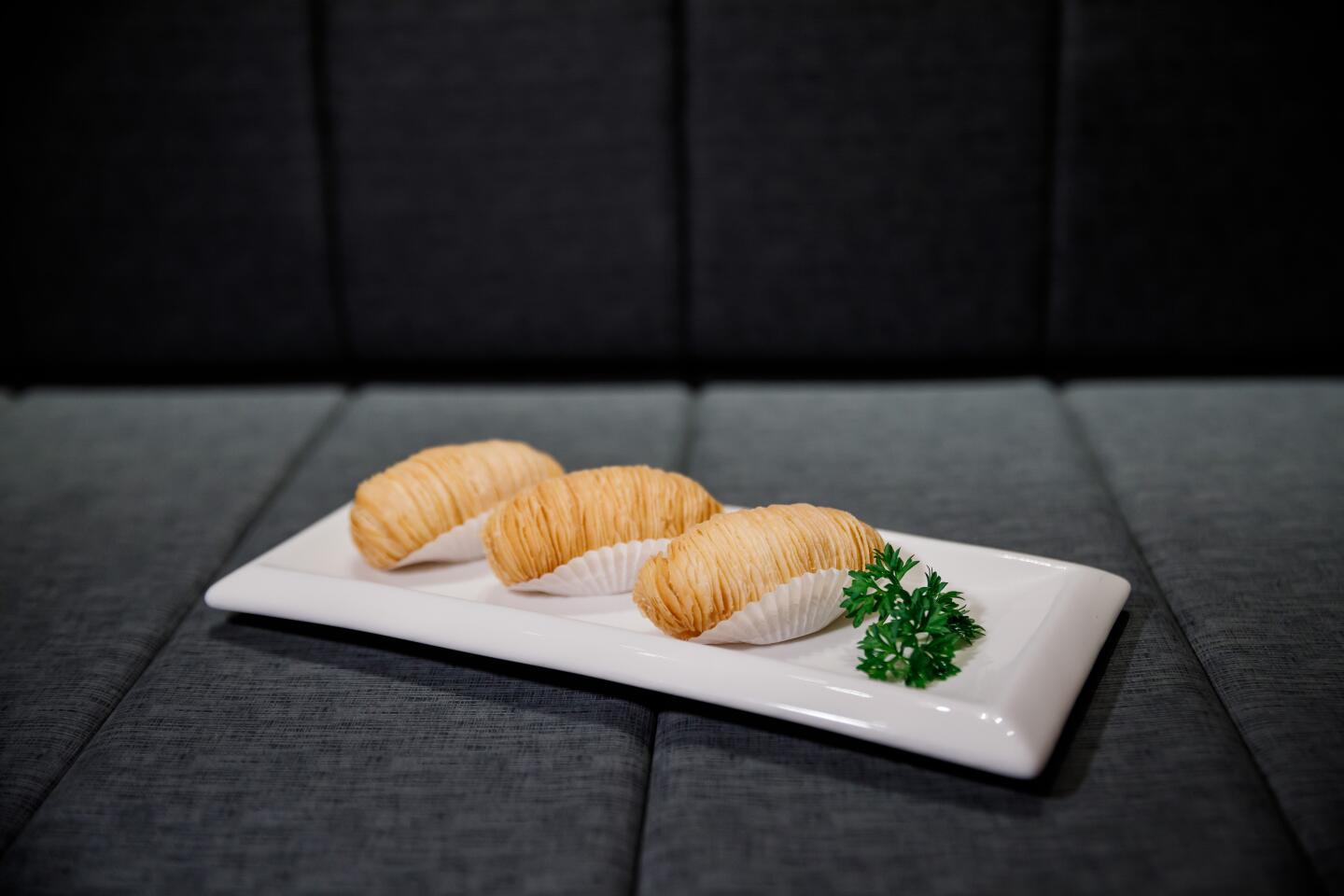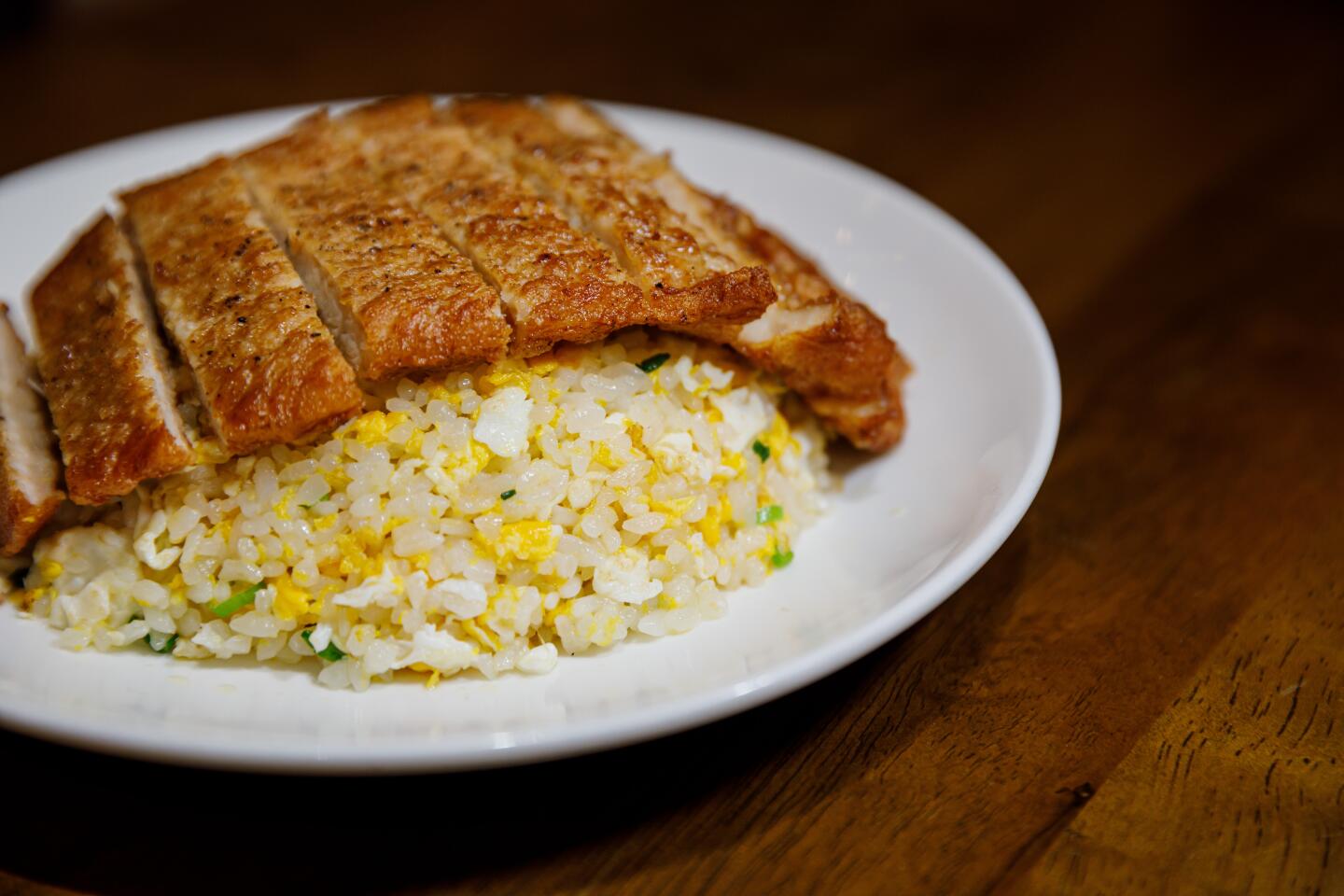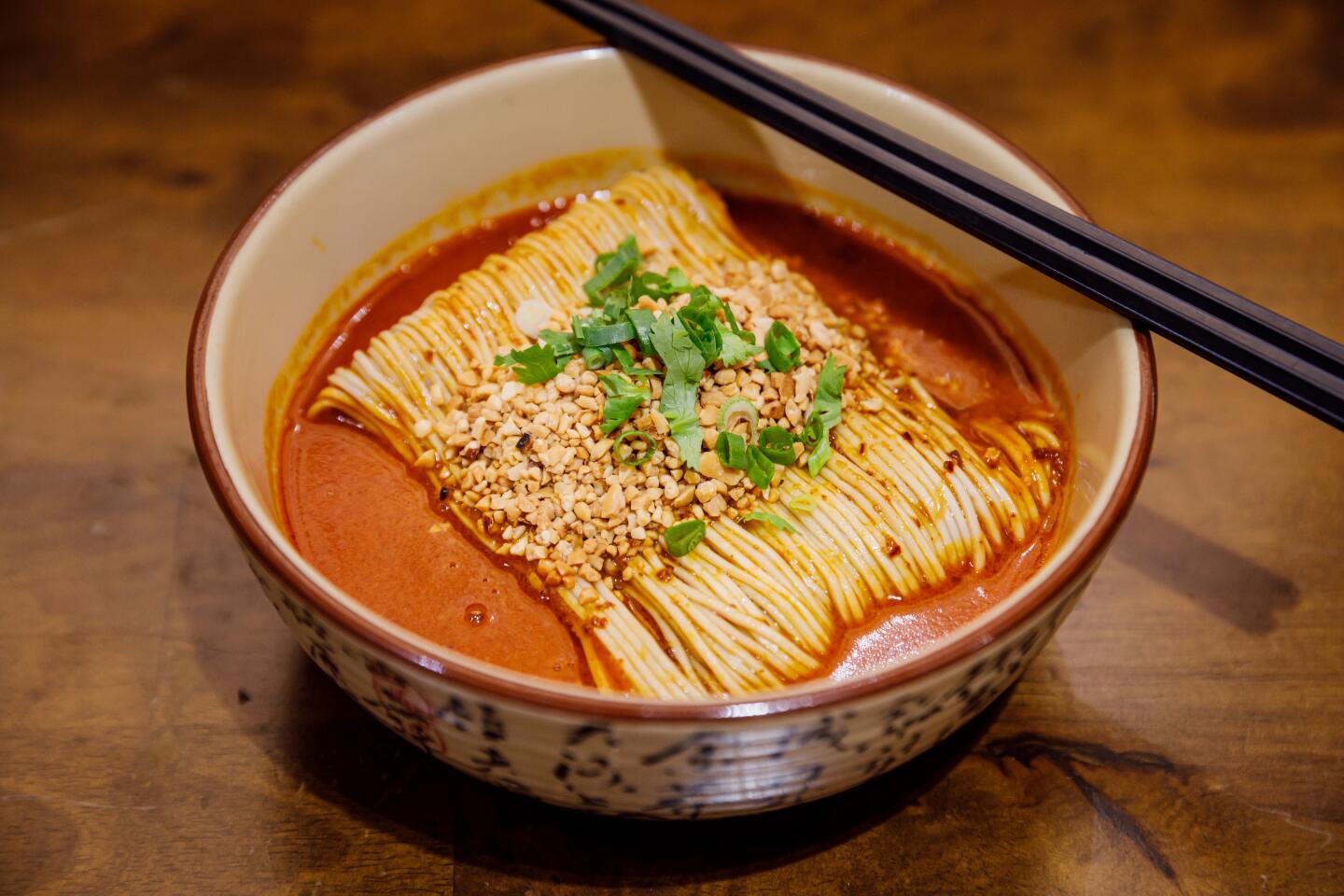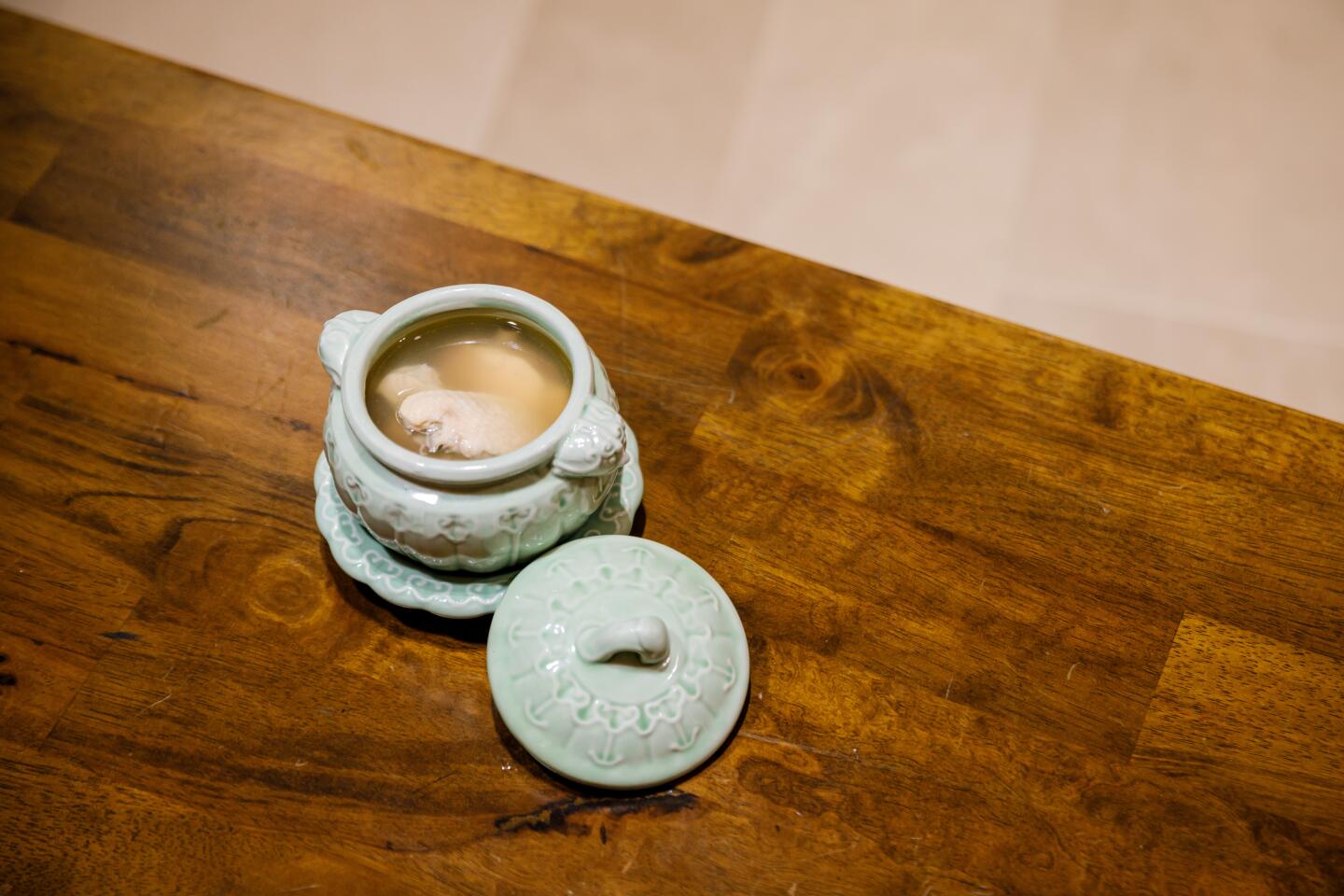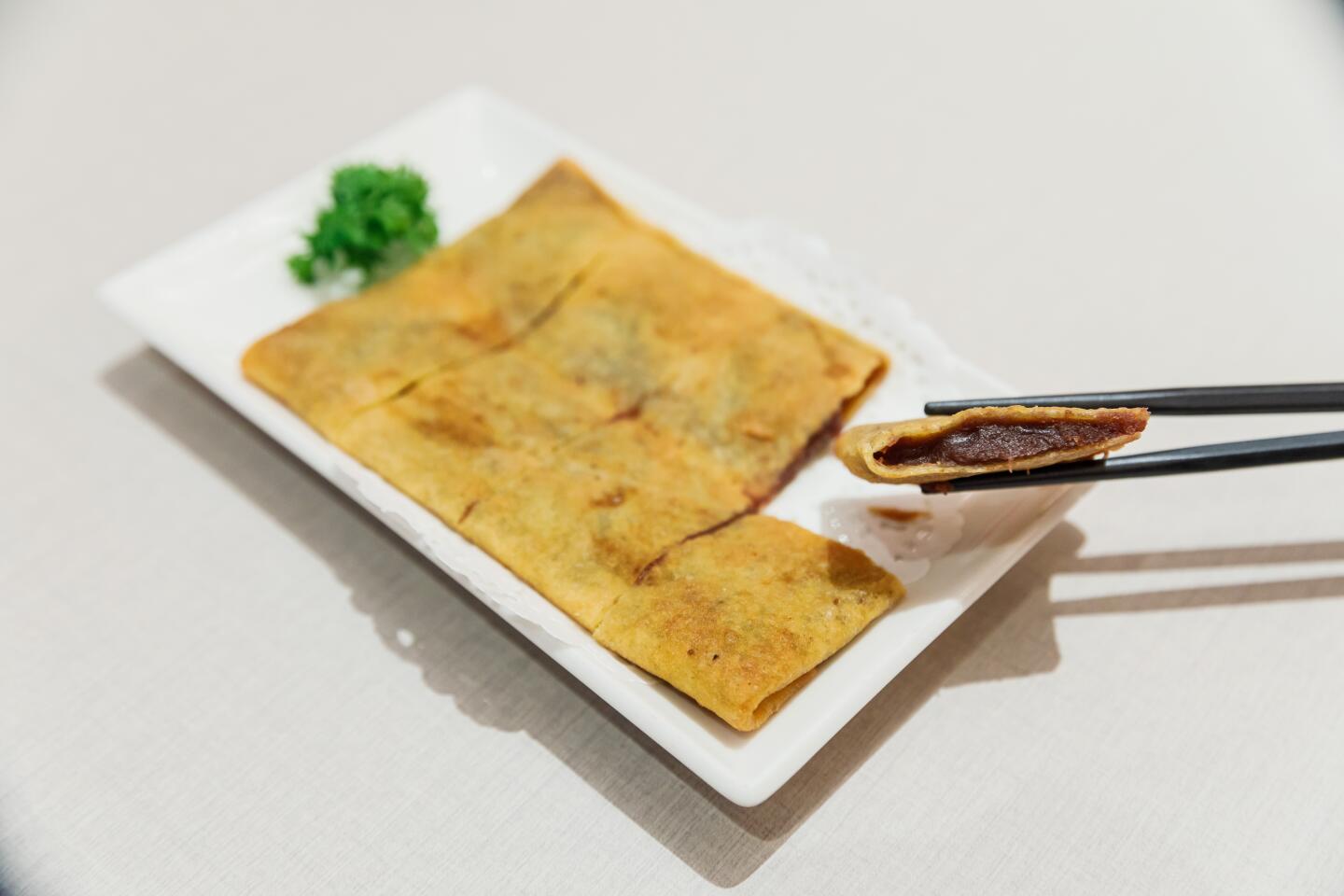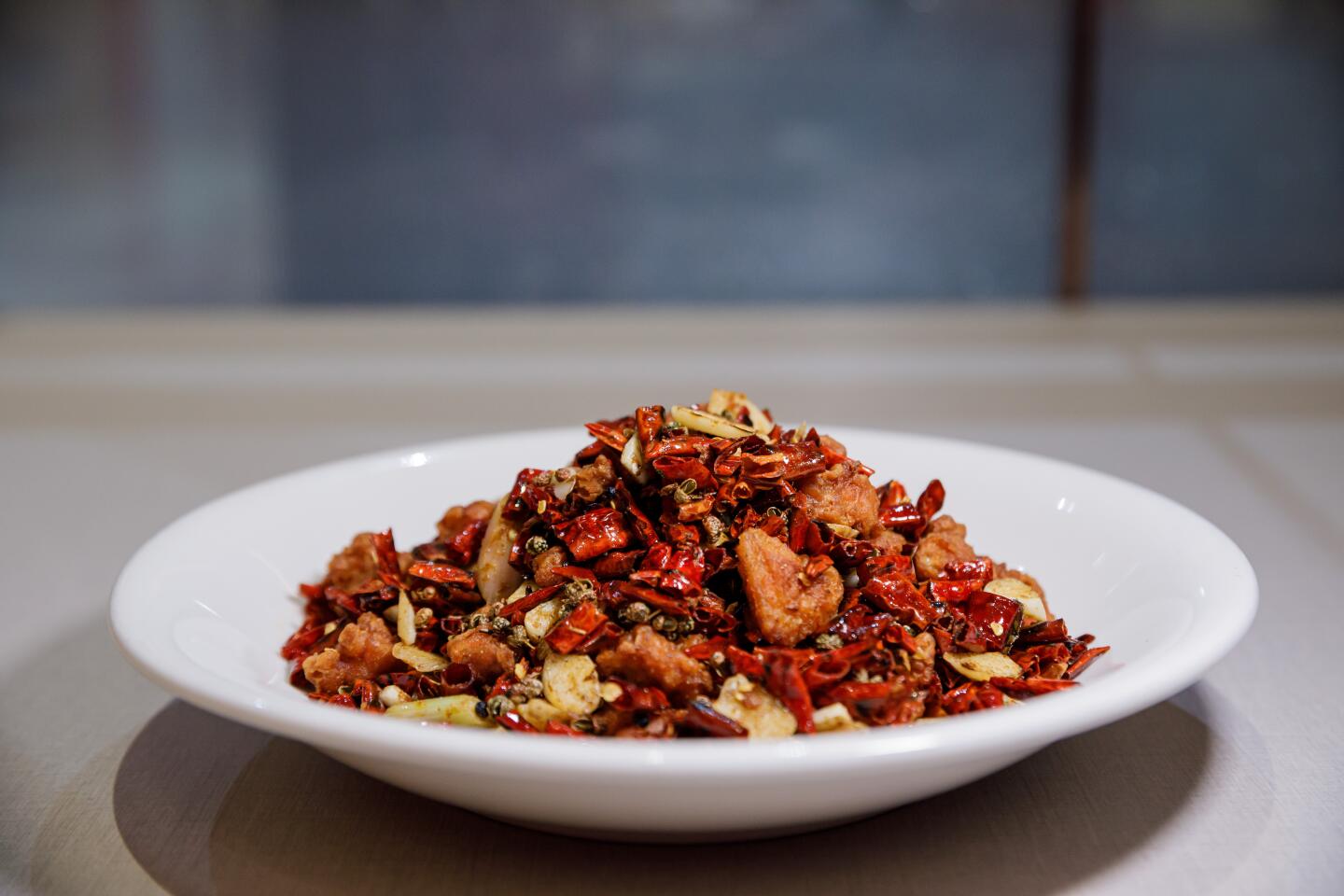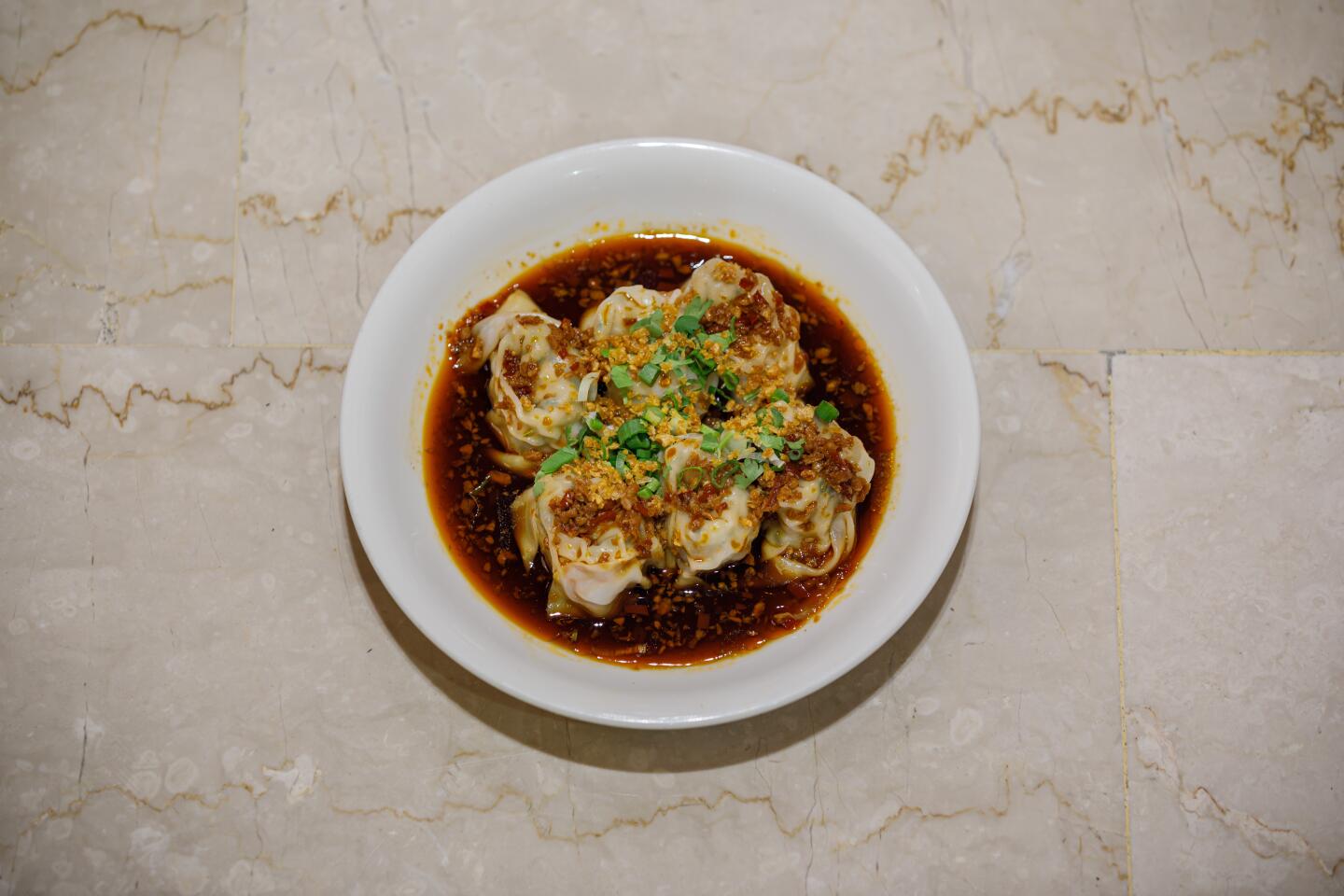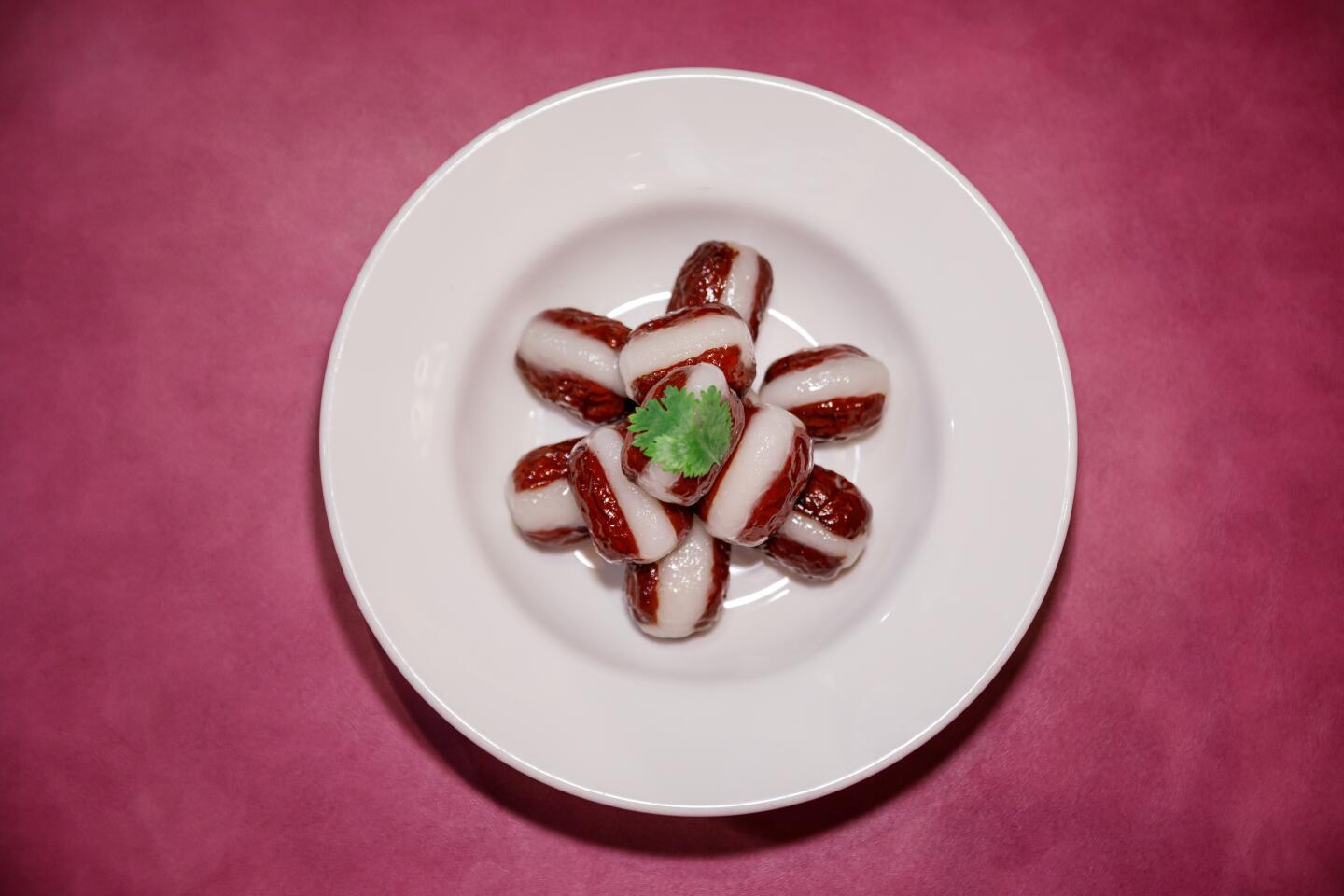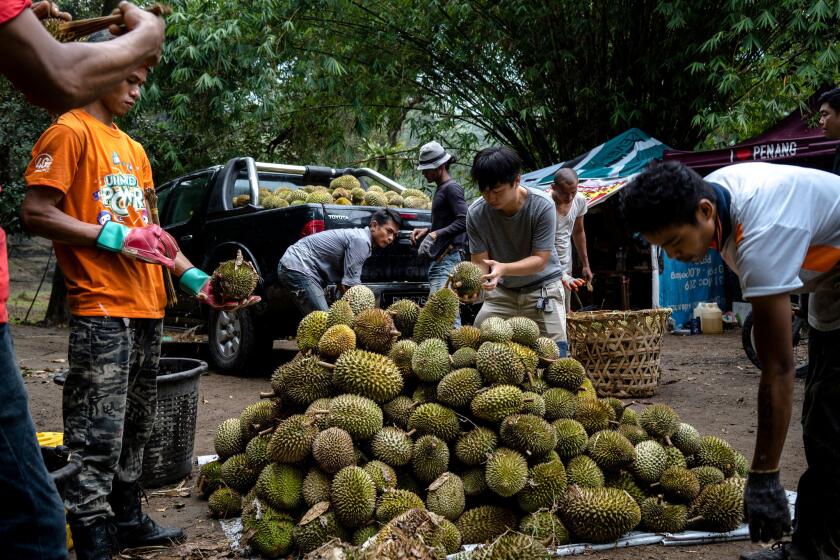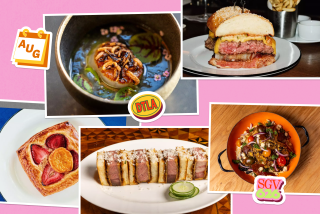A new soup dumpling spot in the OC wants to dethrone Din Tai Fung
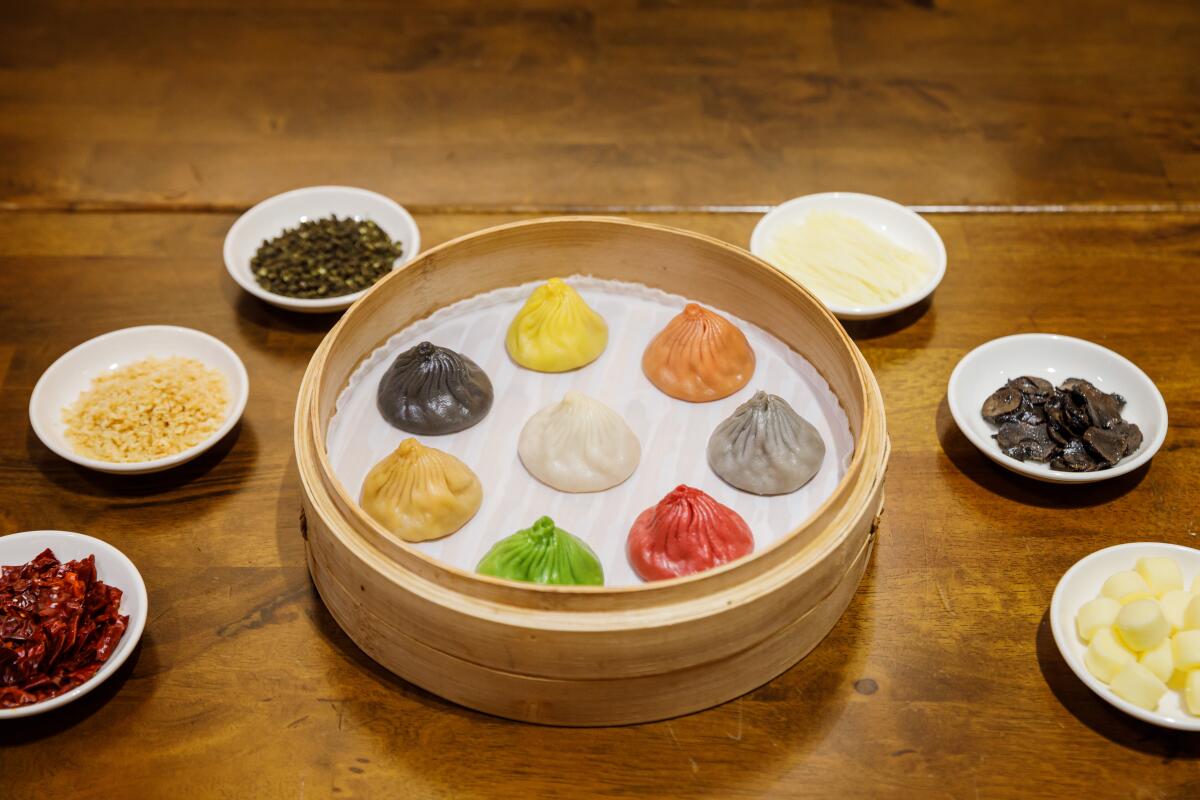
- Share via
Singapore — There’s little Eldwin Chua won’t do to a soup dumpling.
At his Singaporean restaurant chain Paradise Dynasty, the calling card is a multicolored basket of xiao long bao inspired by boxes of French macarons. Each one is spiked with lavish ingredients like foie gras, black truffle and ginseng. Limited-edition flavors have included Taiwanese braised pork belly (lu rou fan), typhoon shelter crab (a Hong Kong specialty heavy on fried garlic) and brown sugar “lava.” This being Singapore, he and his chefs once hatched a xiao long bao stuffed with steaming hot durian.
Yes it’s shtick, but that’s the point.
Even as the restaurateur’s company has expanded — there are now 48 Paradise Dynasty locations in nine countries — it’s still dwarfed by Din Tai Fung, the dominant chain in the worldwide xiao long bao game with 150 locations. The restaurant singlehandedly popularized a classic dumpling, serving as a gateway to authentic Chinese food for neophytes.
Chua marveled at its success. So when it came time to break into the U.S. market, he chose to take aim at the king.
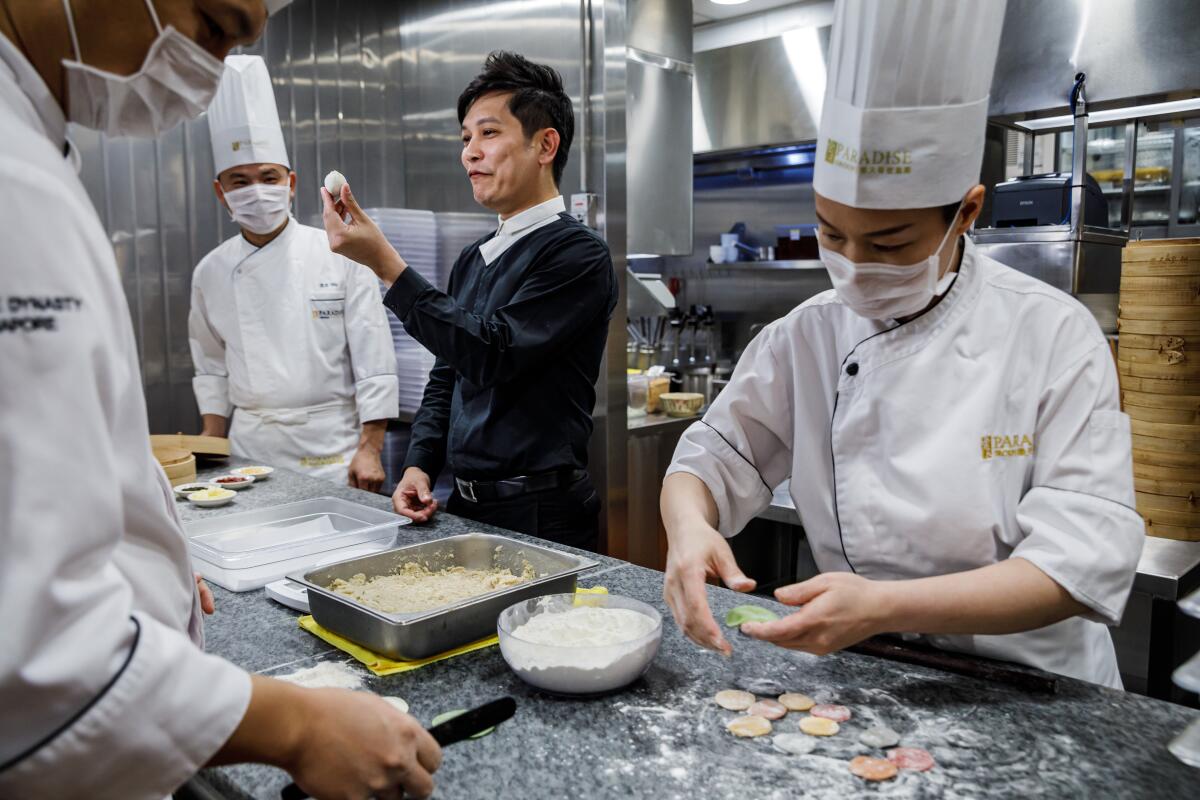
In Asia, the 41-year-old has a penchant for locating his restaurants within walking distance of his Taiwanese rival. He’s been trying to do so in California for years, though mall operators have snubbed him, saying they already had Din Tai Fung lined up.
Then earlier this year, Chua broke through: A customer offered him a sublease for the former Charlie Palmer space inside Bloomingdale’s in South Coast Plaza.
If all goes to plan, the first U.S. Paradise Dynasty will open in the Costa Mesa mall in the spring, steps away from one of the country’s busiest Din Tai Fung locations.
“We respect Din Tai Fung because they are one of the few Chinese restaurants that has really gone global and kept their food consistent,” Chua said. “They produce a good dumpling. But we want to give consumers another option.”
Although they both peddle soup dumplings, Paradise Dynasty is in many ways the anti-Din Tai Fung, a brand whose muted decor and delicate cooking feels like an exercise in restraint.
Paradise Dynasty, on the other hand, holds little back. Its locations are outfitted with ornate chandeliers and brass trimmings and its storefronts proclaim “Legend of Xiao Long Bao.” Its sprawling menu includes Cantonese, Sichuan and Jiangsu standards grounded in the bold flavors of Singapore’s Chinese immigrants, who’ve had to cook food that stands up to the city’s Malay and Indian cuisines.
That means bigger and juicier xiao long bao, stir-fried greens covered in aromatic crunchy fried garlic, and poached chicken doused in a radioactive red Sichuan chile oil.
“Din Tai Fung feels monotonous,” Chua said. “You go there one time, you go there 10 times, it’s always the same. Every time you come to Paradise Dynasty you discover something new.”
Paradise Dynasty opened in 2010 with soup dumplings that taste and feel somewhere between the austere Din Tai Fung version and the oily and dense variety found in mom-and-pop restaurants in Shanghai, the city in China most associated with xiao long bao.
In Singapore, it doesn’t pay to be subtle in the kitchen — not in a maritime crossroads that has absorbed influences from around the world. To stand out against withering competition, cooks have to deliver on both taste and novelty.
In 1949, Indian immigrant M.J. Gomez simmered a thin, tamarind-laced curry sauce with the head of a red snapper; fish head curry continues to be one of the city’s most beloved foods, often served bubbling in a clay pot.
A few years later, an itinerant seafood vendor named Cher Yam Tian stir-fried crab with a bottle of chile sauce; it has since been tweaked by all manner of local chefs and remains the country’s most celebrated dish.
“Singapore loves its over-the-top food,” said Sylvia Tan, a cookbook author and local food historian.
Early in his career, Chua knew he needed a signature, standout dish. His culinary education started at 12 after he lied about his age to get a job at McDonald’s. At 15, he was hired at a cavernous three-story seafood restaurant where he learned to master fried rice and fried noodles. He carried those recipes and skills over to his first venture seven years later, an open-air food stall called a zi char in an industrial neighborhood.
Taken from Hokkien, the dialect from China’s Fujian province spoken by much of Southeast Asia’s Chinese diaspora, zi char literally means to cook and fry.
Dishes are always cooked to order at a zi char and Chua first got noticed by inventing his own style of butter crab, a variant of black pepper crab, which is a variant of chili crab.
He fried chunks of Sri Lankan mud crab and smothered them in a sauce made with butter, evaporated milk, white pepper, coconut crumb, curry leaves and red chiles. Chua said customers would ask him to doggy-bag the leftover sauce so they could mix it with pasta to make a sort of tropical carbonara.
The dish opened new possibilities for Chua, who did not seem predestined for success as the marginally educated son of a factory forklift operator and a part-time nanny. In 2006, he took out loans and sunk his savings into a 40-seat omakase restaurant in the heart of Singapore’s Chinatown. Taste Paradise, as the restaurant was called, attracted a dedicated following from Singapore’s well-to-do with a menu that embodied the hubris of the pre-financial-crisis era with dishes such as foie gras in Sichuan sauce and shark’s fin in stone pot.
One of his customers was a real estate executive, Soon Su Lin, who persuaded Chua to relocate inside her luxury mall at the time, ION Orchard.
The move proved pivotal, kick-starting a period of exceptional growth and newfound exposure for Chua, whose long side-swept hair at the time and propensity for dressing like it was Friday night at a club gave him the faint air of a Hong Kong pop star.
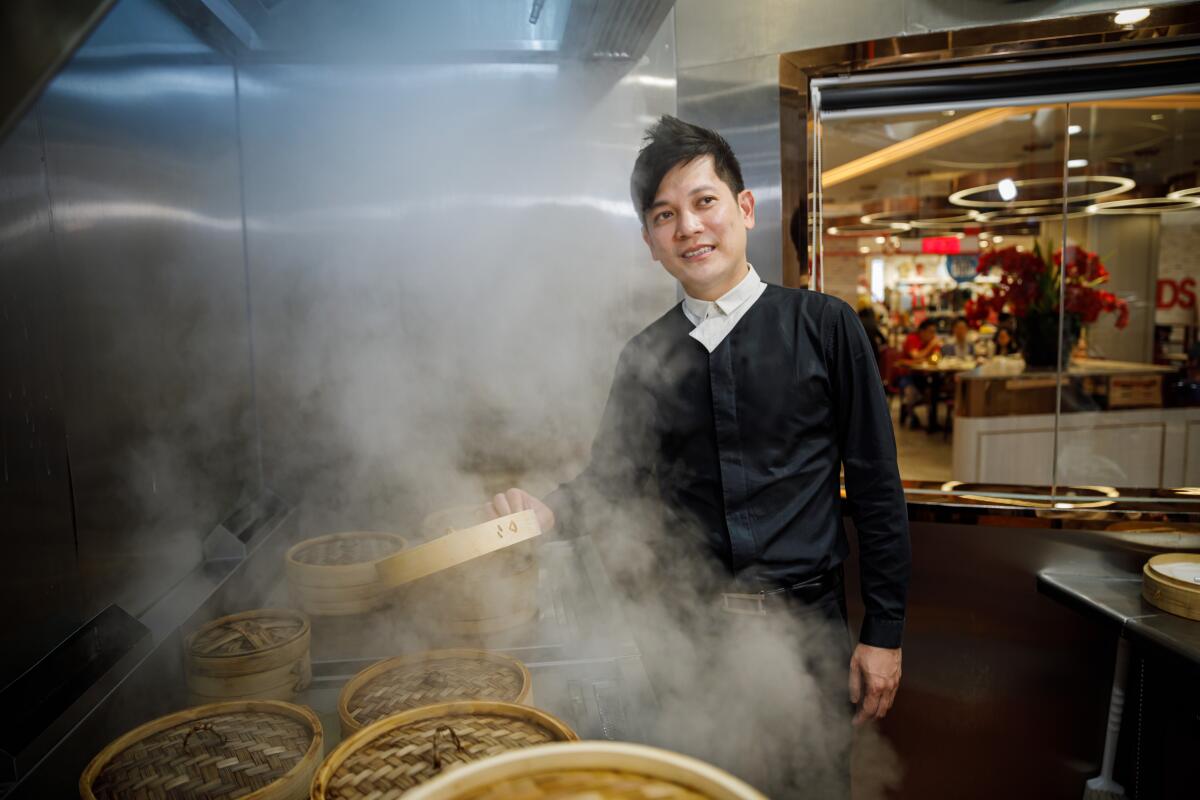
In 2008, Chua formed Paradise Group and began unveiling a series of new restaurant concepts, including Paradise Classic (think zi char with air-conditioning) and Canton Paradise (dim sum and roast meats).
The abundance of upscale malls in a country of 5.7 million people has created demand for reliable restaurant tenants. The result: a small but cutthroat restaurant business fought over by slick corporate chains, including Singapore’s Imperial Treasure and Crystal Jade (backed by luxury conglomerate LVMH) and China’s Haidilao, the hotpot brand valued at more than $24 billion after its debut on the Hong Kong stock exchange last year triggered a frenzy.
Chua had determined that the only way to survive and grow in Singapore’s tiny market was to go overseas or come up with new concepts. He now operates a dozen brands with more than 100 restaurants, making his company among the biggest in the business in Singapore, with $168 million in revenue last year (Chua sold a significant stake of Paradise Group to investment firm PAG Asia Capital in 2016 to help fuel its growth).
A big chunk of that revenue is owed to Chua’s extra-soupy xiao long bao, which he purposely designed to give diners what he believes is more bang for their buck compared with Din Tai Fung.
Paradise Dynasty’s dumpling weighs in at 25 grams, splitting the difference between Din Tai Fung’s, which the chain says is 20 grams, and what Chua said was the typical 30 grams found at hole-in-the-wall restaurants in China. Chua’s specialty dumplings are dyed naturally — squid ink colors the black truffle dumplings, while carrot juice brightens the kid-favorite yellow cheese dumpling, which (to this adult) evokes steamed calzone.
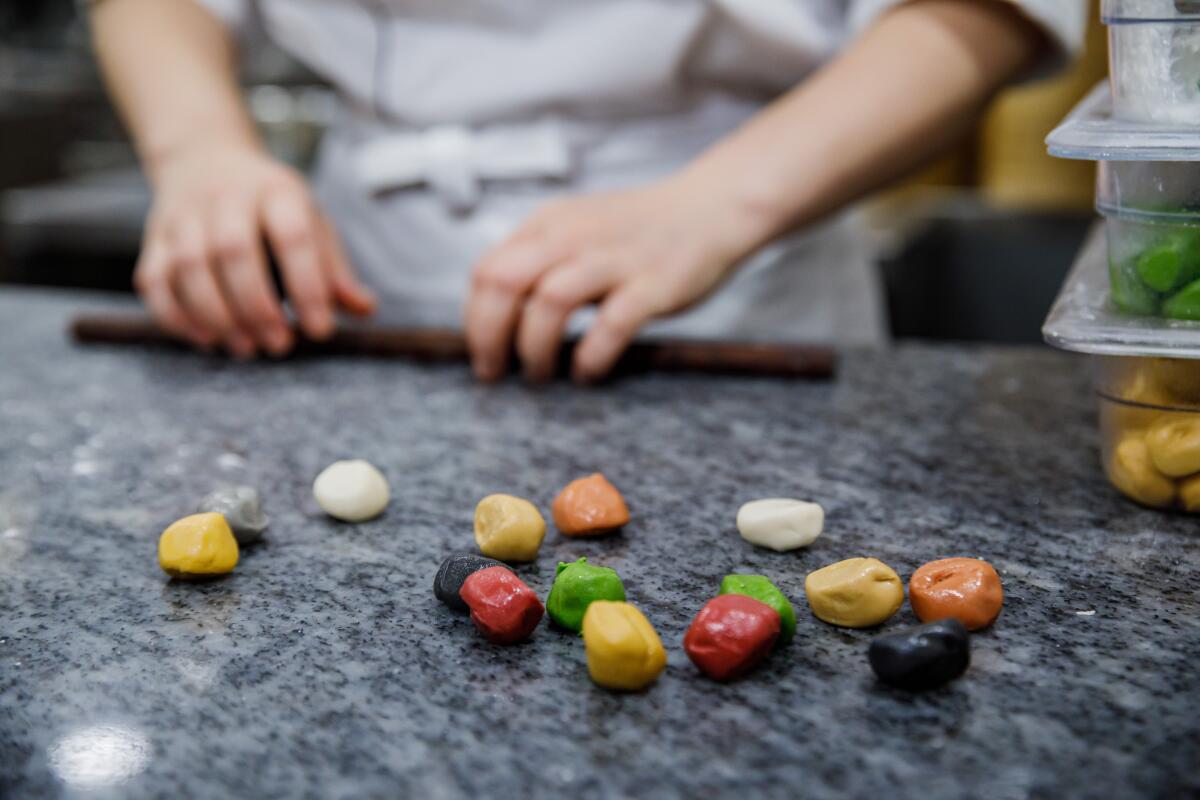
Chua only learned in August that foie gras is banned in California, forcing him and his chefs to scramble to find an attention-grabbing replacement for his brown dumpling colored with soy sauce. So far, they’ve tested Peking duck, dried scallop and a combination of Iberico ham and prosciutto.
“A lot of people say it’s just a gimmick,” said Chua, 41. “But it takes a lot of skill and effort to create these xiao long bao. I challenge another restaurant to do it as consistently as we have.”
No challenge may be bigger than having to replicate his food in Orange County. His California staff is currently identifying suppliers to ensure the forthcoming restaurant’s dumplings and noodles taste the same as they do in Paradise Dynasty’s overseas locations. They’re also trying to secure the same seasonings, which can have an outsized effect, Chua said, one reason why he believes Din Tai Fung in the U.S. can’t fully replicate the flavors of its Asian outlets.
(Aaron Yang, vice president of Din Tai Fung Group USA and grandson of the restaurant’s founder, Bingyi Yang, did not respond to a request for comment.)
“The chicken powder, the soy sauce, even the salt can make a difference,” said Chua, who had to pare down his menu for the U.S. because he deemed some local ingredients inferior.
“You can’t get good jellyfish in the U.S,” he said.
Regardless, Chua is relieved to have a shot after five years of trying. He was turned away by malls, including Westfield Century City and the Americana at Brand in Glendale. When the customer with the sublease, an Irvine real estate investor, contacted him about the Bloomingdale’s space, Chua realized he had finally found a way to pit his xiao long bao against Din Tai Fung’s for a whole new audience. (Chua also will introduce one of his noodle restaurants, Le Shrimp Ramen, in a separate basement space inside Bloomingdale’s).
“Din Tai Fung is the Taiwan version of the xiao long bao restaurant,” Chua said. “All our food comes from China but we do it the Singapore way.”
More to Read
Eat your way across L.A.
Get our weekly Tasting Notes newsletter for reviews, news and more.
You may occasionally receive promotional content from the Los Angeles Times.
